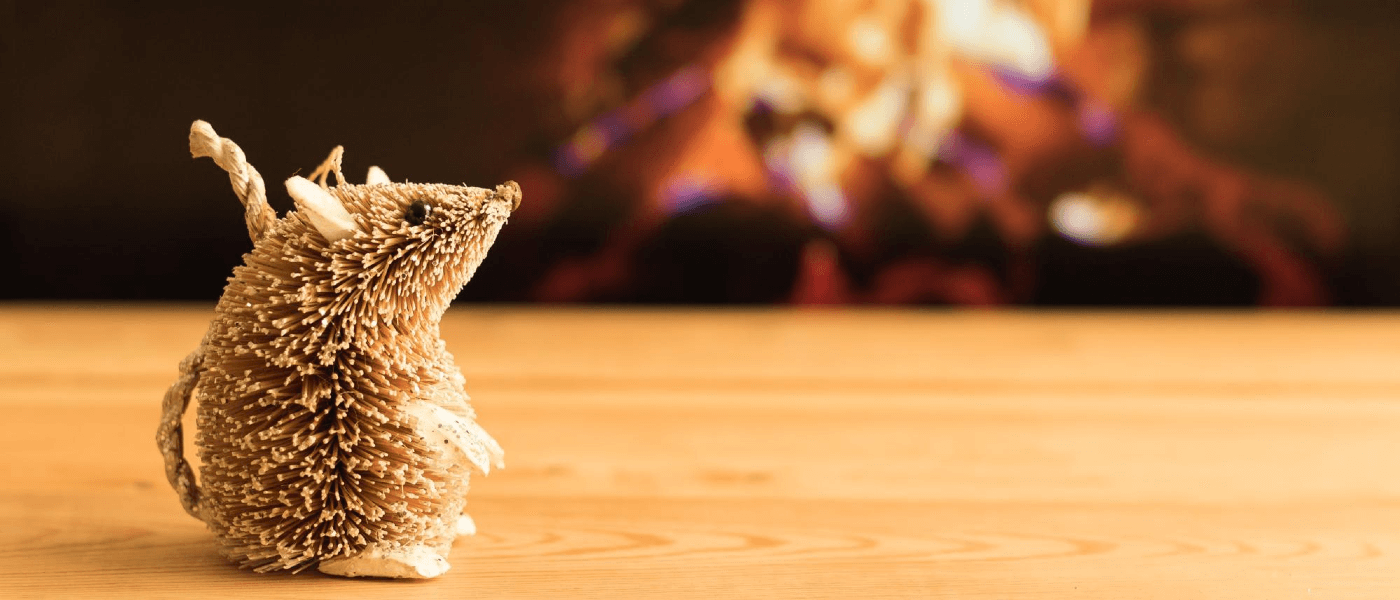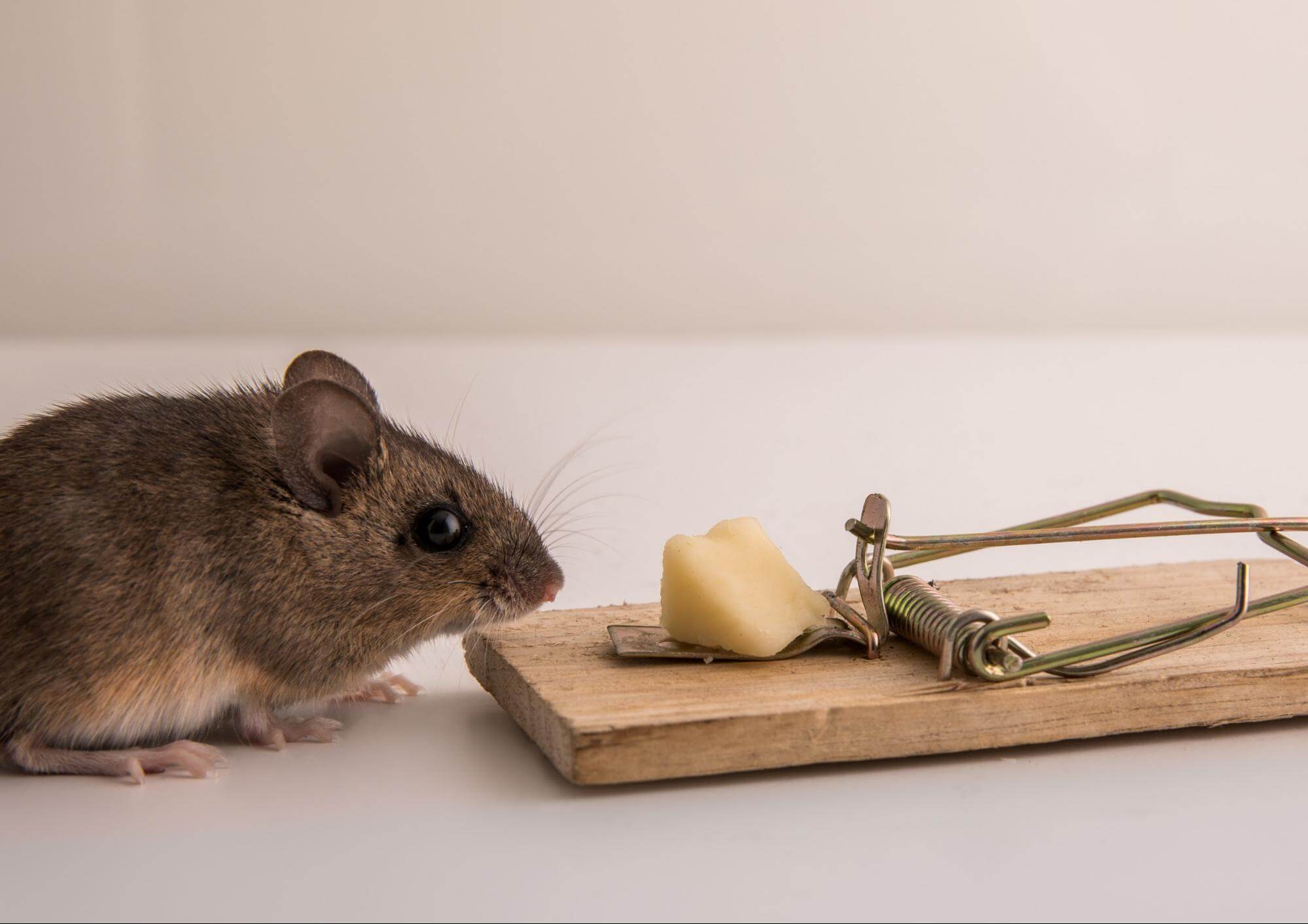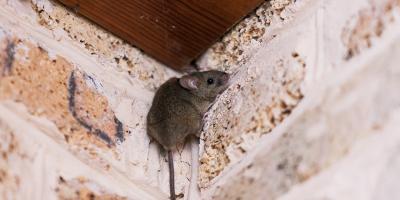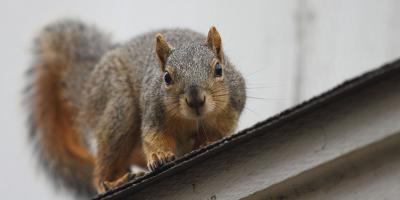When Colder Temps Drive Mice Indoors

Often, when people think of “pests” their minds conjure up typical summertime nuisances, like ants, wasps, or mosquitoes. Larger menaces don’t factor in until tell-tale signs like droppings are found in silverware drawers, accompanied by scurrying sounds coming from the walls or attic. These sounds tend to resonate as the temperature drops with winter’s approach, signalling the undeniable presence of—you guessed it—rodents.
Debunking the Myth
The common belief that some houses have mice and others don’t underestimates just how easy it is for mice to enter any home. Mice are equal-opportunity pests. By taking advantage of any slight opening and chewing the rest of their way in, mice can easily gain access to nearly any structure, and even leave pheromone trails to invite their vermin friends to follow and take advantage of their newly found entry point.
While it’s fair to say that these minor openings might be more prevalent in older homes or structures, even new structures present plenty of opportunities for mice to gain entry, especially as the house settles and the ground below it shifts.
In fact, mice pose a more immediate threat to new homes if the property is surrounded by other new constructions, especially when located in heavily-wooded areas.
Here’s why: when developers come into an area and start clearing the ground for future homes, they disrupt existing rodent nests, forcing mice to seek shelter elsewhere. Conveniently, the walls of a new home provide a cozy space to overwinter.
Seasonal Surge
It stands to reason that the winter months see an uptick in mice activity within homes, both old and new. Mice are no different than other species; they seek warmth during colder months, and their survival depends on it. Hiding in your home also protects them from predators. Using their exceptionally sharp teeth, mice can gnaw into existing spaces, leaving just enough room to crawl through.
Of course, they don’t need much room to do so; biologically, mice come with a collapsible skeleton and do not have a collarbone. Coupled with their strong legs and sleek fur, mice have little difficulty slipping into the smallest of entry points.
How small? It helps to think of a hole the size of a pencil. Imagine the holes housing wires in and around your home, or any small space under doorways. Those provide ample space for a mouse to gain entry.
The Pandemic Has Added Pressure

Unfortunately, the COVID-19 pandemic has resulted in an especially abundant year for mouse populations, following their increasingly aggressive behavior. The shutdown of restaurants and businesses meant fewer food sources for rodents, which threatened their populations. As we stayed home, public trash bins and dumpsters stayed empty, causing chaos within rodent communities.
When threatened, rodents are able to rebound their numbers quickly, which creates population booms. This is common after natural disasters, such as hurricanes and natural food crop shortages, and COVID-19 has certainly resulted in a similar consequence.
The increase in mice populations means that more mice will be seeking shelter once the snow starts falling. So, what happens once mice are inside? What are the challenges and concerns for homeowners?
What Mice Mean for Your Home
Once mice take up residence inside your home, they have the potential to wreak havoc on critical aspects of the building itself, including: structural, electrical, insulation, and of course your peace of mind.
Naturally, when mice gnaw their way into your home, they cause structural damage that typically requires professional repairs. This is nothing compared to the costly and potentially dangerous consequences that can result from mice chewing on electrical wires. Did you know that, according to PestWorld, an estimated 20-25% of residential fires are caused by rodents?
Even if they enter your home without causing structural damage and somehow sidestep your electrical wiring, mice love to cozy up and nest in your insulation. It’s a warm, soft space out of view that provides everything they need to survive the winter safely and comfortably. Of course, nests mean more mice and the mess resulting from fecal matter makes for a costly clean-up, which requires replacing the insulation.
More costly and harmful than insulation repair is the threat of disease that mice pose to residents of the home -- both people and pets. Mouse droppings and urine can spread diseases such as leptospirosis and salmonellosis, which is why exposure to mice in your home can be dangerous.
Between the financial cost and potential health threat, it’s critical for homeowners to proactively protect their home from mice. As with all prevention measures, if mouse populations are controlled around the house before they make their way inside, they are far less likely to gain access and wreak havoc. Naturally, this is also easier and more cost-effective in the long-run when compared to treating the problem after they’ve already gotten inside.
Proactive rodent control primarily involves protecting the perimeter of your home, starting with the following strategies:
Fortify Your Home Base
The first step in guarding your home against rodents starts with sanitation. In other words, you need to remove any accessible traces of food or water that might attract mice in the first place. Make sure your kitchen, specifically floors and countertops, are wiped and swept clean of crumbs. Commit to cleaning up spills thoroughly, as soon as they happen, to avoid any sticky residue lingering on surfaces. All trash and recycling receptacles — both inside and outside of the home — should feature tight-fitting lids and also be wiped down regularly.
Don’t forget the animal food: Spilled pet food and bird seed are the most common accessible food sources for rodents inside homes. Pet food dishes should be washed every evening, and bird feeders should be located as far from the home as possible. Meanwhile, pet food and bird seed should be kept in a hard plastic or glass container that can’t be chewed through.
It’s not just household messes and foodstuffs that attract mice; water sources from leaky faucets and pipes provide another target for mice. Take the time to tighten up any leaky hardware and shore up water sources around the exterior of your home as well. Yard waste and debris, like leaf piles, should also be raked, swept and bagged up in order to eliminate another potential source of shelter and nesting.
Second to sanitation is monitoring. Homeowners should commit to regularly checking the structure of their homes for small openings, often found along the foundation. Remember, these spaces allow mice to enter your home or create a larger opening in order to do so. As winter approaches, they will start ramping up their efforts to seek out and secure these spots, which is why taking action now, before the first snowfall, is essential.
After the above-mentioned prevention measures are in order, deploying bait stations around the outside of the house is the next step in controlling populations immediately, while also feeding them (once and for all), thereby removing their need to enter your home in search of substance.
It’s frustrating but important to realize that even brand new homes can be poorly sealed. In addition to cracks along the foundation, look for other potential access points like gutters, drains, and utility line entry points. Mice are excellent climbers and jumpers, so they can just as easily access openings in the upper-half of your home by scaling the side of the house. Winter is a tough season for mice, but also for the wear and tear on your home. Last year’s harsh weather might have compromised the caulk and grout on the structure, causing it to crumble in certain spots, thereby weakening your protection against unwanted visitors. The point is, any weak link in your home’s structure presents the perfect opportunity for mice to take advantage in order to gain access.
Pursue a Professional Approach

Homeownership comes with enough responsibilities, which is why protecting your home from mice is best left to the professionals. Working with a pest management professional to guard your home from mice means you can rest easy knowing that the experts are in control.
Reputable pest management professionals are well-trained and have a keen eye for finding potential entry points and effectively sealing them up to prevent future rodent entry. Additionally, they have access to products exclusively available to licensed pest management professionals. These products are a crucial cut above any DIY methods a homeowner might find from their local hardware or home improvement store.
Know Thy Enemy
More than the right products, pest control professionals have extensive background training and knowledge of rodent psychology, which makes their efforts far more effective and efficient than the average homeowner’s when it comes to rodent control.
For added peace of mind, homeowners can expect professional pest control services to come covered by a warranty. In other words, should the mice make a return or find their way in for the first time, the relationship you’ve established with your service professional makes it possible for them to quickly return and correct the issue.
At JP Pest Services, these extra visits are entirely covered under their service warranty at no additional cost to the customer. This means complete peace of mind to the homeowner, who no longer needs to waste a second thought on whether their home is vulnerable to big-eyed intruders.
Looking to up the defenses around your home before the winter strikes? Give us a call today for a free quote, and we’ll take $50 off your first service.*
*New services only. Restrictions and limitations may apply. Contact a customer support specialist for details. Offer valid through 12/31/20..



